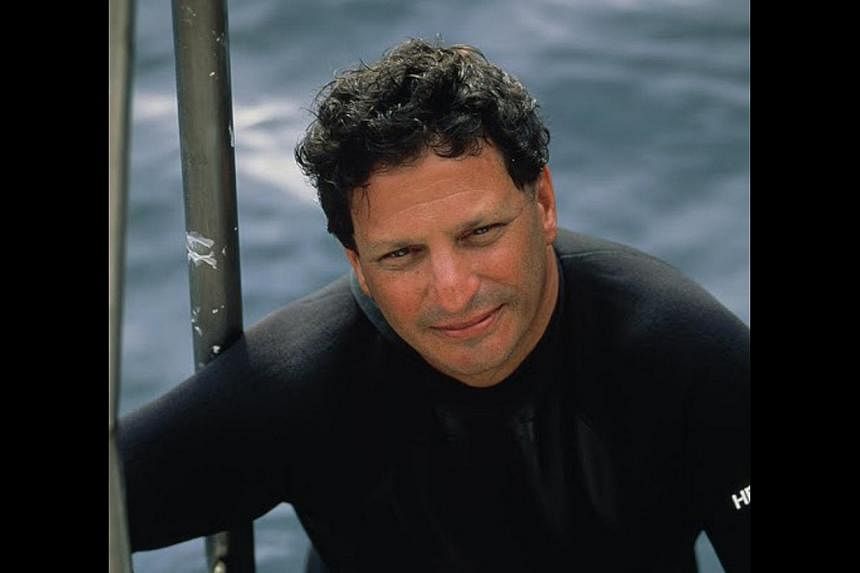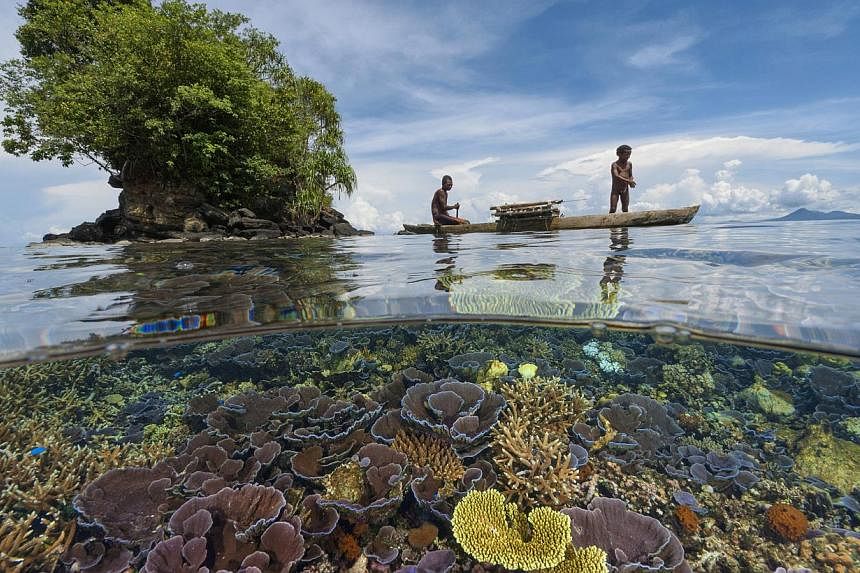American underwater photographer David Doubilet was only eight years old when he became enamoured with the underwater world while snorkelling at a summer camp in the Adirondack Mountains.
He says: "As a child, I was not happy being on the surface. I saw what it looked like underwater in the small lake I was in and told myself this was a new world I wanted to be."
When he was 12, he made his first underwater camera by putting a Brownie Hawkeye camera into a rubber anaesthesiologist bag and attaching it to the remains of an old diving mask.
Now 67, he is one of the world's most acclaimed underwater photographers and has published nearly 70 stories for National Geographic Magazine since his first assignment in 1971.
The recipient of many prestigious international photographic awards such as Picture of the Year, BBC Wildlife, Communication Arts and World Press, he has also written 12 books, including the award-winning Water Light Time. He lives with his wife Jennifer, a photojournalist and aquatic biologist, in the small town of Clayton in New York State.
Doubilet will be in Singapore to conduct a National Geographic Live talk, Coral, Fire, & Ice: Explore Secret Underwater Worlds, on Aug 25 at the Esplanade Concert Hall. The audience will be taken through his adventures across three continents, as well as view never-before-seen images.
Despite his vast experience accrued over five decades, Doubilet says there are still many treasures left in the seas to unearth. "This is something I've done all of my life, but the more I uncover and photograph, the more I realise what I don't know. It's a voyage of discovery."
1 How dangerous is your job?
It can be very dangerous. You're breathing underwater, something that is unnatural for humans. But in the past 50 years, I've had very few equipment failures. On the other hand, we have to take a lot of chances, whether it is diving at night in rivers or swimming in open waters with tiger sharks feeding on the remains of a dead sperm whale.
Some of the most dangerous diving Jennifer and I do is right next to where we live, in the St Lawrence River. We are diving with a raging current in front of a dam - if you don't get up quick enough, you can get sucked into the dam.
2 What are some of the biggest challenges in taking underwater photographs?
Photography is first and foremost about light and how light comes and falls into the sea.
A lot of the light disappears as you go deeper into the sea, so an underwater photographer has to carry electronic flashes - camera, the lights and the strobes. You are carrying these large implements, which can be as big as microwave ovens, through the sea.
3 What are some tips you can give enthusiasts?
You have to be a very good diver. Do not skimp on your equipment and learn how to use it before you go. Most point-and-shoot cameras, even though they can go underwater, do not have wide-angle lenses, which are a must- have if you want to see the seascapes.
4 What is your favourite part of the ocean?
My favourite part of the ocean is the ocean. I like to shoot images that are half in and half out of the water because it relates a world of the surface to the world of the water and the molecular thin surface that runs across the middle of the picture.
5 What do you hope viewers can take away from your work?
Jennifer and I want to open people's eyes to the sea through our pictures. Pictures have the power to convince the unconvinced; humble, embarrass, appraise and show people the extraordinary things that are beneath the surface of the sea.
6 What is your biggest fear?
Photographers are not afraid of what is in front of them: They are afraid of failing to capture the image. We spend our lives getting ourselves into extraordinary situations. The difference between adventurers and us is that they can get themselves into these situations, but they don't have to come back with an image that illustrates the other world that they have just seen. We as photographers have this responsibility.
7 Do you have a personal mantra for photography?
Dream, think, shoot. But most of all, shoot.
8 How would you like to be remembered?
I hope to be remembered as someone who influenced a whole group of younger people to go into the sea, opened their eyes to the ocean and made pictures that transcend the mere needs of journalism into something more.


